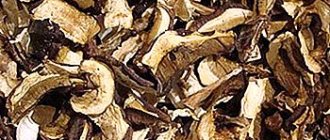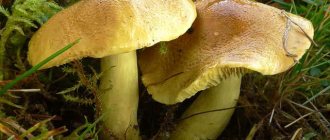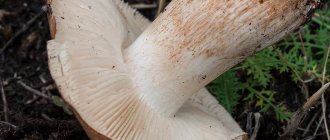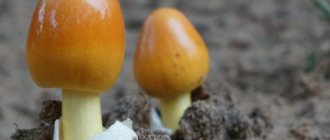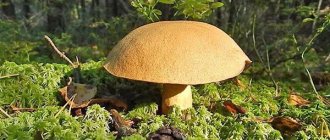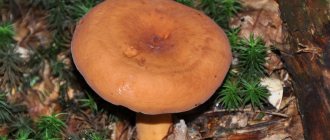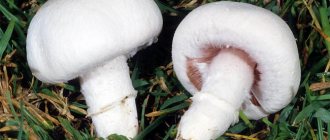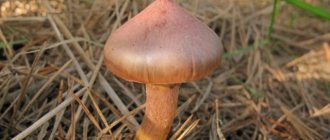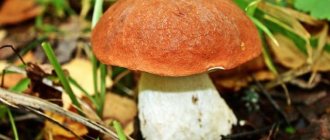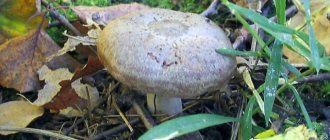The greenfinch mushroom is considered widespread in all regions of Russia. inexperienced mushroom pickers often confuse it with green russula. In the initial growth stage, these two mushrooms are very similar to each other. Various sources classify greenfinch as a conditionally edible mushroom. However, some biologists and mycologists classify them as inedible. The fact is that this mushroom contains toxic substances that are not destroyed at high temperatures. It is these substances that give the color green and can lead to a number of problems with the cardiovascular system.
Description of the greenfinch mushroom
The greenfinch mushroom (Tricholoma flavovirens) belongs to the class Agaricomycetes, genus Tricholoma, family Rowaceae. The main names in Russian are: green row, zelyonka or zelenushka. I received them for their characteristic green color, which remains even after cooking. Refers to conditionally edible.
Synonyms:
- Agaricus equestris L;
- Gyrophila equestris;
- Glutinaster equestris;
- Melanoleuca equestris;
- Tricholoma auratum Gillet;
- Tricholoma flavovirens.
What does a greenfinch mushroom look like?
hat
Convex in shape towards the middle, flat-spread with mushroom growth. Diameter from 4 to 12 cm. Color light olive with a yellow or green tint, brownish in the center. As the mushroom matures, the tones become darker. Thick skin. The cap has radially diverging small scales, which are sticky in wet weather, which is why a variety of forest debris and grains of sand often stick to it.
The hat can be olive, green-yellow. As the golden row grows and develops, the outer surface of its cap darkens, and in old mushrooms it becomes dark green. On the inside, the color of the cap is identical to the color of the leg; there are also many thin, oblong plates located there.
Pulp
Has a dense structure. In young mushrooms, the color is whitish, gradually acquiring a shade of yellow; the color does not change when cut. Yellowish under the skin. It has a slight smell of flour or cucumber, more concentrated when next to pine. Tasteless. Greenfinch is rarely affected by worms. The color of the plates ranges from light yellow with a faint color to yellowish-green in more mature specimens. Wide, frequent, notched. They grow from 0.5 to 1.2 cm in width.
Description of the greenfinch mushroom.
Leg
It is painted in the color of the cap, but in a slightly lighter tone. Short, almost “sunk” into the soil. At the exit it is covered with small dense scales with a brown tint, slightly thickened. Height 3-5 cm, girth 1.5-2 cm.
How to collect?
Greenfinches are not so easy to find. And all because they hide well in the soil. The leg goes completely into it, and the greenish sticky caps disguise natural debris and grains of sand. Therefore, to find them, the mushroom picker has to carefully dig through the sand.
It is better to go for mushrooms in dry weather. During prolonged rains, the caps become covered with mucus, which mixes with sand, and finding greenfinches becomes problematic. Strong young mushrooms are collected; it is better to leave the older ones, as their flesh is hard and tasteless.
Morphology of greenfinch
In its morphology, the greenfinch differs from other species in its specific color, low stalk (4-6 cm in length and up to 2 cm in thickness), which is most often thickened towards the bottom, frequent and small plates (6-11 mm thick), corresponding to the color of the stalk . The hat has an uneven color: along the periphery it is light yellow-green, and closer to the center it is darker, olive, mustard. Unlike other species, it does not have an unpleasant, pungent odor. According to morphological characteristics, the most similar to the greenfly is the edible gray row. The only difference is the color; in the gray row it is mousey, dark gray, sometimes with a greenish tint.
Additional material: Golovach: a tasty and healthy mushroom of gigantic size
Varieties and lookalikes
The genus of rowers is innumerable (more than a hundred species) and amazing in its diversity. You can’t pass by without looking at them, then determine whether there is room for any of them in the basket. As in the entire kingdom of mushrooms, row mushrooms are divided into edible, inedible, and poisonous.
Important! Greenfinches are resistant to destructive damage caused by worms! If a mushroom contains traces of worms, it is not a row!
Edible species include:
- The blue-legged mushroom is unusual both in appearance and in taste. The color attracts attention: a blue leg, a purple cap, the plates of which turn yellow over time, purple flesh with a gray or blue tint. Unusually bright and large. It has a delicate taste with sweet fruity notes, reminiscent of either pineapple or apple. Check out the photo carefully if you plan to try it;
- The white-brown row mushroom is a conditionally edible species. This means that you will have to cook it for at least 15 minutes. In non-CIS countries it is considered inedible. It has edible varieties, such as scaly row, broken row, golden row, spotted row, yellow-brown row. These species are united by a brown or red flat cap and a white leg. All of them do not grow in a pine forest. They are so similar to each other that even a specialist can find the differences only with the help of a microscope. They are also similar in taste, by the way, not very bright qualities;
- giant row mushroom , judging by its name, is distinguished by its impressive size. Very large fruiting body, fleshy cap up to 20 cm in diameter, brown or reddish, lighter towards the edges, massive cylindrical, stem up to 10 cm in height. The dense white pulp has a pleasant nutty aroma and is slightly bitter;
- earthy row , gray row often grows in the same place as greenfinches, choosing sand and pine trees. The cap is medium-sized, up to 10 cm in diameter, the color of which varies from pale gray to olive. The pulp is white or grayish, loose, the stem is fibrous;
- The honey fungus row is little known to mushroom pickers. The convex cap, up to 10 cm in diameter, is orange-brown in color with age, flattens out to prostrate, and becomes radially fibrous with white adherent plates inside. The height of the leg is from 6 to 10 cm, cylindrical in shape, hollow from the middle, decorated with a red-brown ring, above which it is white, below it is red-brown;
- the row is reddish , the cap of which is asymmetrically located, flat, thick-fleshed, gray, with white-pink plates that turn red with age, the edge is drooping. The leg near the base is greenish or bluish, then white. The pulp is dense, white, and has a pleasant floury smell. When broken, the flesh turns red. A very tasty mushroom that can be used even fresh.
Inedible rows include:
- fibrous row (pointed ). The cap is from 4 to 8 cm in diameter, conical-bell-shaped, flattening towards the edge with a sharp protruding tubercle in the center, gray, with radial fibers. The edge of the cap is cracked. The plates are white, freely arranged. The pulp is white or gray, bitter. The stalk is longitudinally fibrous;
- soap row , which is very similar to greenfinch, is practically a double. The cap is up to 10 cm, convex, sometimes spherical, has an uneven lobe-shaped edge, gray, olive, with shades turning yellow, unevenly colored. The plates are greenish with yellowish tint. The thick short stem tapers towards the base. Yellow-gray, with rust at the base. The pulp is dense and has a repulsive smell of laundry soap, which intensifies during heat treatment. When broken, the white flesh turns pink and is slightly bitter. It differs from the greenfinch in its rare, light-colored plates without greenery and a repulsive odor;
- The reddish-red rower (woolly or bearded) is confused with the edible scaly rower. Its dry cap, up to 8 cm in diameter, is similar to a cone with folded edges spread towards the bottom. Hairy-scaly to the touch, red-brown. Medium-frequency plates with a fine-toothed edge, sometimes with dark spots. The cut darkens. The leg is cellular, hollow. The top of the leg is white, turning brown towards the bottom. Pulp: fleshy, high density, light, has a slight floury or unpleasant dusty odor. The taste is bitter, which is why it is classified as inedible, although mycologists sometimes consider this variety to be slightly poisonous;
- separate (different) row . Another species that can be confused with greenfinches. The diameter of the cap is 5–15 cm, the fleshy, dense, bell-shaped shape becomes convex and flat towards the edges. It has characteristic dark brown grooves. The color palette is wide: from greenish-yellow to gray-brown. The plates are white, but turn yellow over time. Rarely located, although wide in size. The cylindrical stalk is curved, with flocculent scales. The dense pulp is bitter, the smell is floury. Some consider it conditionally edible and use it for pickles after boiling. There is evidence of its toxicity.
For your own safety, you cannot help but study the poisonous types of rows:
- sulfur row , also sulfur-yellow, is mentioned in the description of the greenfinch to avoid confusion in the definition. It features a velvety cap surface. Consumption leads to mild gastric upset;
- white row is toxic. White cap with possible ocher spots up to 12 cm in diameter. The edges are wavy and spread. The white plates turn yellow over time. The leg with a powdery coating can be yellow, red or white. The pulp is fleshy, fibrous at the base, an irreducible musty smell appears as the mushroom grows;
- brindle row . Its danger lies in its pleasant smell and taste. However, within two hours a person faces an eating disorder, vomiting, and diarrhea. Its toxins have not yet been studied. The cap is up to 12 cm in diameter, spherical, then becomes flattened with age. Has thin folded edges. The skin color is off-white, gray-white, black-gray with a blue tint. The cap is covered with dark flakes of scales. On rare plates there may be small droplets similar to drops of water. The cylindrical leg with fibers becomes bald with age, the color is white with an ocher coating. The gray pulp does not change color when cut. The taste is not bitter, the smell is pleasant, floury.
Distribution and fruiting period
Green row mushrooms grow in symbiosis with coniferous trees, usually in pine forests with dry soil or in mixed forests. They are located alone or in clusters of 5-8 copies. Prefers sandy and sandy loam soils. Can be found along the sides of forest roads. They grow, “disguised” in soil or moss up to the cap, and closer to frost they hide under pine needles. Distributed throughout the country. From mid-August to November (until frost). When most of the mushrooms have already “moved away”, the greenfinch continues to grow actively.
Green rower grows exclusively on sandy soils, especially readily settling in coniferous forests, among which it primarily chooses pine forests. It can grow completely alone, but does not avoid companies of up to eight copies. Greenflies are of particular value in the eyes of mushroom pickers because of their ability to emerge from the ground during that sad period when the main types of edible mushrooms end their growing season. The green row can be harvested from September until frost. And it is distributed throughout the Northern Hemisphere in its temperate latitudes.
Green row or greenfinch.
The growing area is large in those countries where the climate is temperate:
- Canada;
- USA;
- some countries of Europe and Central Asia;
- Kazakhstan (northern part);
- steppe regions of Russia (Volgograd, Saratov, Voronezh, Samara (along the Volga bed), Omsk regions, Siberia, Altai, Ural; Belarus; Ukraine (Polesie, forest-steppe).
Greenfinch lives until late autumn. The search will be successful only from the beginning of autumn until the first snow. You won't find any other mushrooms in November-December.
Greenfinch hat.
Description of the golden row
The row has a dense fleshy cap of yellow, green or yellowish-olive color with a diameter of 4 to 12 cm. In young plants it is flat-convex with a tubercle on top, in mature plants it is spread out with raised, slightly wavy edges. Upon reaching adulthood, the cap darkens. The skin is thick, smooth to the touch, in rainy weather it becomes slimy and covered with soil particles and adherent leaves. This is due to the fact that the cap has small scales to which foreign bodies stick.
On the reverse side, the cap has frequent and thin plates 5-12 mm wide, lemon-yellow, sometimes greenish-yellow. When broken, the flesh is dense and white. The mushroom is less susceptible to infection than other brethren, and is practically never wormy. If you make a cut, the color on it does not change. When inhaled, the odor has a floury tint and an unexpressed taste. Experienced mushroom pickers note that the most pronounced smell is characteristic of rows that grew in a pine forest.
Greenfinch (greenfinch or golden rower) belongs to the rower family and belongs to the genus Lamelidae
If you pay attention to the leg, it is short and thickened towards the bottom, completely hidden in the ground. The color is yellow or yellow-green, depending on the age of the fungus.
Collecting greenfinches brings additional trouble to mushroom pickers. Hidden prey must be found, properly cut, and then cleaned of sand and leaves before placing in the basket.
The green grass often grows on the sides of forest roads and is hidden under fallen leaves so that the cap is barely visible. Sometimes you can find a single specimen, but most often in a group. You can immediately find graylings and greenfinches together, which makes the collection even more enjoyable. Greenfinch has doubles, rows similar to her. You can distinguish them by their unpleasant smell. They are a little smaller and not as meaty. Often young mushroom pickers do not collect young green stuff because they are afraid of confusing it with toadstool. Externally, the difference is visible both in color and structure.
Its poisonous counterpart has a ring on the stem and the flesh is not so elastic.
Collection of greenfinches
Collecting greenfinches is not easy, since almost all of their legs are hidden in the ground, and their caps merge with the ground and are often located under pine needles. It is preferable to collect greenfinches at the end of autumn, just before the onset of frost. Usually this is mid-October - early November. This species grows in open areas, where there is a lot of light, near young coniferous trees, often pine trees, alone or in groups of up to 8 pieces.
Since the mushroom tends to “collect” surrounding debris, including sand, the stem should be cut off carefully, in a vertical position, above the soil level. Before putting the cut mushroom into the basket, you need to clean the cap: using a scraping motion with a knife or running a brush over it. When the jaundice is cleaned and there is no sand between the plates, it can be placed in the basket.
In a pine forest, groups of rows become noticeable after the grass withers, due to the skillful camouflage of the fungus. Its leg is almost always completely hidden in the ground or under a layer of fallen pine needles, grass and moss. Experienced mushroom pickers successfully find this mushroom along ditches and swamps and even under aspen trees, knowing where to look. It is difficult to notice a green row if the fruiting body goes completely underground, and the cap is close in color to the sandy area around it, so for inexperienced mushroom pickers, greenfinches are not always an easy prey. In open areas, greenfinches are more conspicuous when it is no longer the season for other mushrooms.
How to properly collect greenfinches.
Eating
Greenfinch is a food product with a dubious reputation: on the one hand, it is believed that it is very tasty and suitable for consumption, and on the other, that this mushroom is dangerous and its use can lead to unpredictable consequences. Until 2001, the mushroom was considered conditionally edible, but later cases of poisoning began to appear due to its excessive consumption. Even 3 deaths were registered in France. The toxins are believed to attack skeletal and smooth muscles, destroying them, and also cause rhabdomyolysis, which in severe cases leads to kidney failure.
The benefits and harms of mushrooms
The beneficial properties of greenfinch are easily explained by its impressive composition of nutrients. But when consuming mushrooms, moderation must be observed. Mushrooms contain substances that suppress pathogenic microflora, in particular staphylococci, thin the blood and cleanse it, and normalize the functioning of the cardiovascular system. Greenfinches have an effect on bone tissue, strengthening it, and the digestive system, improving intestinal motility.
Despite the fact that the mushroom is edible, several cases of fatal poisoning have been recorded. The reason was overeating greenfinches. Do not forget that they contain a toxin that destroys muscle tissue. Long-term consumption of mushrooms has a negative impact on health:
- muscle weakness is observed, which is expressed in rapid involuntary contraction of the limbs;
- disorders of the cardiovascular system occur;
- liver cells are destroyed;
- there is a malfunction of the kidneys.
The main specter of toxin poisoning is a change in urine color. It turns dark brown. You should immediately seek help from a doctor and exclude the product from your diet.
Greenfinch is also often found near highways or in industrial areas. Mushrooms absorb toxic substances and heavy metals from the environment. After eating such mushrooms, a gourmet will not escape severe poisoning. Signs of poisoning include impaired renal function, renal failure, and irritation of the bladder mucosa. Therefore, any mushrooms should be collected in environmentally friendly areas.
Chemical composition of the greenfinch mushroom
Nutritional value Greenfinch is not very high in calories, having only 19 kilocalories for every hundred grams. It consists of 46% protein, rich in valuable amino acids. The other part of its composition, 49%, is occupied by carbohydrates, represented mainly by glycogen. And the fats present in the composition (5%) are mainly expressed in the form of phosphatides, lecithin and cholesterol. Green grass protein has a whole range of amino acids beneficial to humans:
- tryptophan;
- arginine;
- lysine;
- serine;
- valina;
- glycine;
- histidine;
- threonine;
- isoleucine;
- aspartic acid;
- leucine;
- glutamic acid;
- methionine;
- phenylalanine.
- cystine;
- proline;
- tyrosine;
- alanine
Greenfinch is very rich in micro- and macroelements, among which the most is phosphorus, and also includes: iron; potassium; calcium; magnesium; zinc; selenium; sodium; manganese; copper. Vitamins are also well represented in this mushroom in the form of: vitamin C; vitamin B6; vitamin B12; vitamin E; riboflavin; thiamine; vitamin D; vitamin D2; nicotinic acid; vitamin K1; pantothenic acid; folic acid; choline
Old greenfinch mushroom.
Beneficial properties of green grass and contraindications
Serukhas and zelenukhas are considered quite nutritious, almost half of their composition is proteins, and the same amount contains carbohydrates, which are mainly represented by glycogen. The amount of fat is minimal (in the form of phosphatides, cholesterol and lecithin). They also contain a large number of amino acids (tryptophan, arginine, methionine and others), carotenoids, vitamin B6, microelements (ferum, potassium, magnesium, calcium, phosphorus, cuprum, iodine, etc.) Energy value: 19 per 100 g kcal Fungi exhibit antistaphylococcal activity.
Contraindications to their use are as follows:
- children under 12 years of age;
- any pathology of the kidneys, liver and gastrointestinal tract;
- blood clotting disorder;
- muscular dystrophy and low body mass index;
- any autoimmune diseases;
- pathologies of the cardiovascular system;
- diabetes;
- long-term use of anticoagulants;
- pregnancy and breastfeeding.
Before any method of preparing jaundice, it is necessary to rinse well. To do this, they are held under running water and tapped on the cap. Then they are placed in a container with warm salted water for 2 hours (so that the remaining sand falls to the bottom). The next step is to carefully rinse them several times and clean the top layer from the cap.
Related material: How to distinguish edible mushrooms from inedible ones
Salting rules for the winter
Before any method of preparing jaundice, it is necessary to rinse well. To do this, they are held under running water and tapped on the cap. Then they are placed in a container with warm salted water for 2 hours (so that the remaining sand falls to the bottom). The next step is to carefully rinse them several times and clean the top layer from the cap.
Pickled greenfinches
Greenfinches are never eaten raw. Therefore, after cleansing, cooking is necessary, which is carried out for 20 minutes. Then the mushrooms can be salted for the winter.
You may be interested in:
What does the boletus mushroom look like and its description (20 photos) One of the most common edible mushrooms in our country, which is equated in taste with porcini mushroom...Read more...
Cold way
In order to pickle greenfinches in a cold way, you will need a dry and clean deep container. You need to pour your favorite spices into the bottom (bay leaf, dill, garlic, horseradish, pepper, etc.) Then mushrooms are placed on top in one layer, caps down, sprinkled with salt (at the rate of 40-50 grams per 1 kg of greenfinches).
Then repeat the manipulation with the next layer and so on until the jaundice runs out or the container is full. The next step is to install a press on top so that it presses them down well. The dishes are left in this form for a week, until the mushrooms have thoroughly released their juice. As soon as this happens, the container is transferred to a cool place. The product can be used after a few months.
Blanched
Instead of prolonged soaking of jaundices, you can use the blanching method. To do this, pour salt into a container of water at the rate of 10 grams of salt per 1 liter of water, bring to a boil and turn off the stove, then put the mushrooms in the water and keep them for half an hour to an hour.
Pickling
To prepare the marinade, you can use any spices (cloves, allspice, black pepper, bay leaf, twigs or leaves of blackcurrant, cherries, horseradish, etc.) After water with greenflies, spices and salt (per 1 liter of water - 1.5 tbsp salt) boil for 30 minutes, add 1 tsp. vinegar and after 5 minutes the fire turns off.
Marinated mushrooms
Then the contents of the container are distributed into jars, closed with nylon lids and sent to a cool place (with a temperature of 1-6 °C). The destruction of harmful bacteria, which can be fatal if they enter the human body, depends on how long the mushroom is cooked. Therefore, you should not reduce the cooking time.
Similar species
There are some similar species to greenfinches:
- Aspen greenfinch (Tricholoma frondosae) is a very similar species, differing in its scaly cap and ecology. It forms mycorrhiza with birch and aspen; in Western Siberia it is recorded in small-leaved-dark-coniferous forests of the Khanty-Mansi Autonomous Okrug. It is very likely that the species is widely distributed in suitable biotopes, and that findings of Tricholoma equestre from dark coniferous-small-leaved forests of the Tomsk and Novosibirsk regions, mentioned in the literature [7], actually refer to T. frondosae.
- Auvergne grass (Tricholoma arvernense) - similar in brownish, mustard and greenish-yellow shades in the color of the cap and is sometimes found at the same time in the same biotopes, but is well distinguished by white plates without yellow shades.
- Sulfur-yellow row (Tricholoma sulphureum) - similar in bright greenish or mustard-yellow tones in color, but is well distinguished by the more uniform color of the fruiting body, sparser plates and a characteristic strong, pungent chemical odor.
- The different or isolated row (Tricholoma sejunctum) and similar species, the slightly different row (T. subsejunctum) and the green-yellowish row (T. viridilutescens) are a little reminiscent of the greenfinch with bright yellow-green tones in color, but differ in habitat, preferring mixed small-leaved and dark coniferous forests , and white coloration of the plates.
- Golden rower, or golden greenfinch (Tricholoma auratum) is a hard-to-distinguish look-alike species with a stickier cap surface; most authors consider it a synonym of T. equestre, however, molecular genetic studies of this group of species have shown that T. auratum specimens from Japan form a branch separate from the bulk of T. equestre specimens and European specimens identified as T. auratum [5]. Only further research can clarify the picture.
- In various reference books and encyclopedias of mushrooms, some similarities between greenfinch and pale grebe (Amanita phalloides) are often noted in light of the danger of confusing these mushrooms when collecting greenfinch for food. The pale grebe, a representative of the fly agaric genus, is reliably distinguished from the greenfinch by the presence of a well-developed membranous ring on the stalk, a large sac-like volva at the base of the stalk, and the white color of the pulp and plates. In Western Siberia, the pale grebe is rare, and the populations known to us are confined to birch forests and artificial oak plantings, however, there are reports of isolated finds of this species in steppe pine forests in the Altai Territory.
Material on the topic: Mushrooms: where to look and when to collect
Perhaps the only common, definitely edible mushroom with a greenish color on the cap remains the green russula (Russula aeruginea). Bright specimens of this russula can be superficially similar to both the greenfinch and the pale toadstool. Green russula differs well from greenfinch by the complete absence of yellow tones in the color of the plates, legs and pulp, which is brittle like chalk. The cap skin of this russula can be easily removed almost to the middle of the radius.
Edibility, beneficial properties and restrictions on consumption
Zelenukhas belong to the third food category. These are conditionally edible mushrooms, the preparation of which requires adherence to complex preparation technology.
First, the greenberries are soaked. The water will have to be changed several times, since these mushrooms often collect a lot of sand. After soaking, they are boiled. Under no circumstances should greenfinches be consumed raw. The foam that forms during the cooking process must be removed. Boiled green mushrooms are washed with water and only after that they begin to prepare them - frying, stewing, salting, etc.
Mushrooms contain many useful substances. They are rich in vitamins, amino acids, micro- and macroelements necessary for the human body. But excessive consumption of greenfinches can cause serious harm to health.
Some mycologists suspect this species to be poisonous. The basis for such thoughts was scientific research into greenfinch poisoning. However, it is worth noting: only cases of overeating mushrooms were accompanied by serious consequences. From which we can draw the following conclusion: you can eat greenfinches, but within reasonable limits.
How to pickle greenfinches for the winter
Salted green mushrooms look very impressive. The peculiarity of these mushrooms is the complete preservation of color, regardless of the type of processing. Green mushrooms can be salted separately or prepared assorted mushrooms with the addition of chanterelles and boletus.
Making pickles is easy. To do this, boiled mushrooms are placed in jars and filled with marinade. Rolling up jars is not recommended. It is better to use nylon covers.
You may be interested in: How do edible talkers differ from false mushrooms? How many days after rain do mushrooms grow? Bitter mushroom: photo and detailed description
The marinade is prepared based on the following calculations:
- water – 1 l;
- table salt – 2 tbsp;
- sugar – 2 tbsp;
- black peppercorns – 5-10 pcs.;
- allspice – 2-5 pcs.;
- cloves – 2-3 pcs.;
- vinegar (9%) – 3 tbsp.
All ingredients (except vinegar) are mixed in a saucepan and brought to a boil. The marinade takes 10 minutes to prepare. A couple of minutes before the end, pour vinegar into the pan.
How long to cook and fry
Blanch the mushrooms for half an hour after boiling. This is a must. The boiling time cannot be reduced, even if further cooking of the dish involves additional heat treatment. Do not forget that greenfinches are conditionally edible.
Note!
This means that they are allowed into food only after certain processing. You can check the degree of readiness in the following way: well-cooked mushrooms settle at the bottom of the pan.
Boiled mushrooms are dried and sent to a frying pan for frying or transferred to a roasting pan for stewing. Cooking time takes from 15 to 20 minutes. Green mushrooms are fried and stewed in the same way as other mushrooms.
Due to their color, greenfinches look unusual. These mushrooms can be eaten, but only after complex processing.
How to properly clean mushrooms from sand
As I already said, greenfinch loves sandy soil and it sits in it quite deep, so sand is its obligatory component, which there is no desire to feel on your teeth. Firstly, before you put the mushroom in a bucket or basket, you need to remove any debris that has stuck to the cap. We collect mushrooms in cotton gloves, so our hands remain clean and it’s convenient to clean the mushrooms from sand with gloves. You can, holding the greenfinch vertically with the plates down, lightly tap the mushroom on a tree or bucket to shake out the sand. The lower part of the leg is always covered in sand; it can either be cut off immediately or scraped a little with a knife. Of course, this will not completely clean the mushroom, but it will make it easier for further processing at home.
It is recommended to process the mushrooms right away, but it doesn’t always work out; sometimes we come back too late and process them the next day. They say that you then need to scatter them on a flat surface so that they do not lie tightly to each other. But we don’t do this; nothing bad will happen to them if they stand overnight in a bucket or basket in a cool place, for example, on a loggia.
Before processing, greenfinches must be soaked in water. They do this with milk mushrooms so that the bitterness goes away. With greenfinches, you need to do this solely so that the sand comes out. I usually add a handful of salt to a container of water, leave the mushrooms for a couple or three hours, and stir occasionally. In salted water, the plates open up better and the salt is washed out. The next, final stage of processing is to rinse the mushrooms under running water. The hats are almost clean after the salt baths; we don’t remove the outer skin, we just wash them. We wash the plates under running water using an unnecessary toothbrush, thereby washing away any remaining sand. The same brush can be used for the legs or scraped with a knife.
Zelenukha or greenfinch.
Is it possible to grow this type of mushroom yourself?
Greenfinches are usually not cultivated at home because:
- they are inferior in yield to oyster mushrooms;
- they are difficult to clean, not every housewife wants to tinker with them;
- the presence of a toxin in their composition does not make them more popular among mushroom growers.
But there are also admirers of this type of mushroom who grow them on their own plot. Seed material is purchased in the store, but it is rare.
Before sowing, the mycelium is mixed with sand or dry soil. They loosen the soil under the tree and make holes 5–15 cm deep, depending on how the roots of the trees are located towards the soil surface. The mycelium is evenly scattered and covered with forest soil, to which humus is added (1:1). Water well with water from a watering can and sprinkle with soil that remains after digging holes.
Planting is carried out in spring or summer under coniferous trees, preferably under young pines or spruces. In hot weather, water the plantation regularly. The greenfinch mycelium is a long-lived plant and will continue to grow until the tree dies.
So, although greenfinch is not very popular among mushroom pickers, it is used in cooking. Before processing, they should be thoroughly cleaned of debris and sand, and then boiled. Mushrooms are used for preservation. When pickled, the mushroom caps turn brown or olive-colored. When boiled, the color of the flesh intensifies and they become greener.
0
0
Copy link
The main similarities and differences between the rows of gray and greenfinches
Podzelenki and brilliant greens differ only in the color of the cap and stem; the shape of both species is almost identical. The difference is already reflected in the names of the mushrooms: the synonym of the first is little mice, gray (it refers to the color of the cap with the stem of a milky tone with an admixture), the second is jaundice, green row (the name indicates the characteristic general color of the fruit). The color of the pine trees is fundamentally gray, neutral or cold, while the golden row is a distinct warm yellow-olive color. It is almost impossible to confuse them.
Known places of growth
The yellow-bellied greenfinch is distributed throughout Russia. Mushrooms begin to appear in mid-August in large quantities until frost. When many types of mushrooms can no longer be found, the green row still continues to delight mushroom pickers.
The greenfinch mushroom can grow alone or in clusters of 6-8 copies. Zelenka grows next to coniferous trees. Most often they can be found in pine forests and mixed forests. Greenfinch grows in sandy and sandy loam soils. Usually green mushrooms inhabit the sides of forest roads, but they are still difficult to notice, since fallen leaves hide the green mushroom with a cap. With the onset of frost, the mushrooms hide under the needles. Sometimes green rows can be found in the vicinity of earrings, which will make harvesting the last harvest more enjoyable.
Collecting greenfinches is not as simple as it seems. Only patient mushroom pickers will be able to find a large number of tasty green mushrooms, and after finding the hidden prey, it is necessary to clean the crop from sand, dirt and leaves.
Cleaning mushrooms from impurities is a mandatory measure, since they easily absorb various components located nearby and in the ground. Experts do not recommend collecting specimens in the area of railways and highways, where there are a lot of substances harmful and dangerous to the human body. It is also not recommended to collect greenfinches even on the city border, since this area is also highly likely to be polluted by industrial waste. Mushrooms grown far from sources of infection are clean and healthy products suitable for collection and consumption.
Is it possible to confuse or similar species?
When collecting greenfinch, there is a danger of confusing it with similar mushrooms, which can cause significant harm to human health. For example, the poisonous sulfur row, which has some similarities with it, also grows in coniferous forests and has the same ripening period.
You can distinguish this toxic row from the greenfinch by the smaller size of the cap, by its bright yellow-gray color, and also by the unpleasant smell of the pulp.
Gray poisonous row Another one - spruce, or sultry - is not as poisonous as sulfur, but is considered inedible and differs from greenfinch in its smaller size and high, thin stem.
Spruce row
